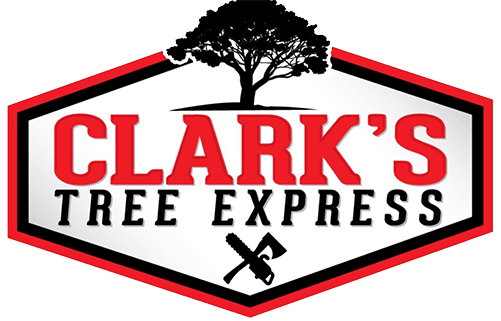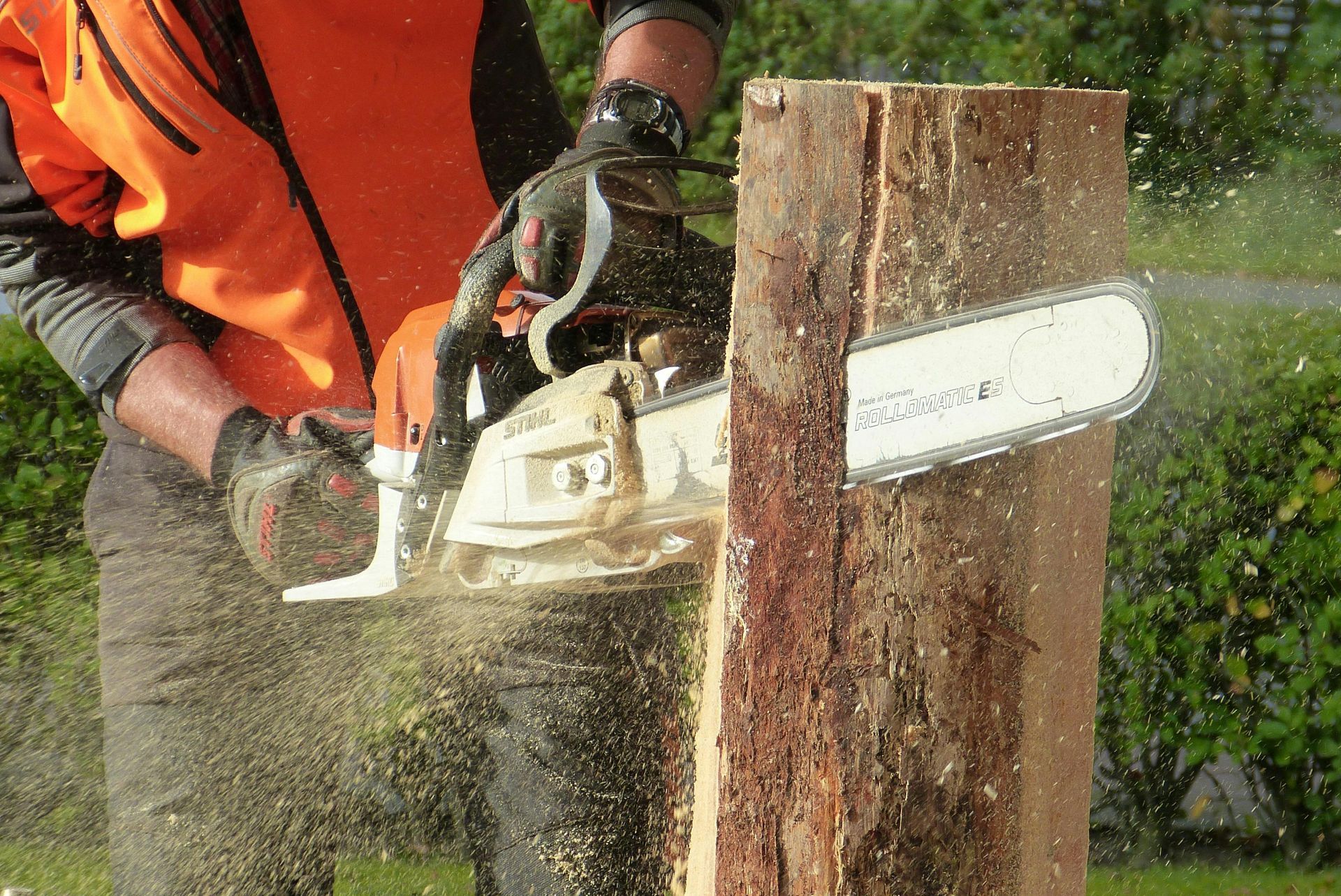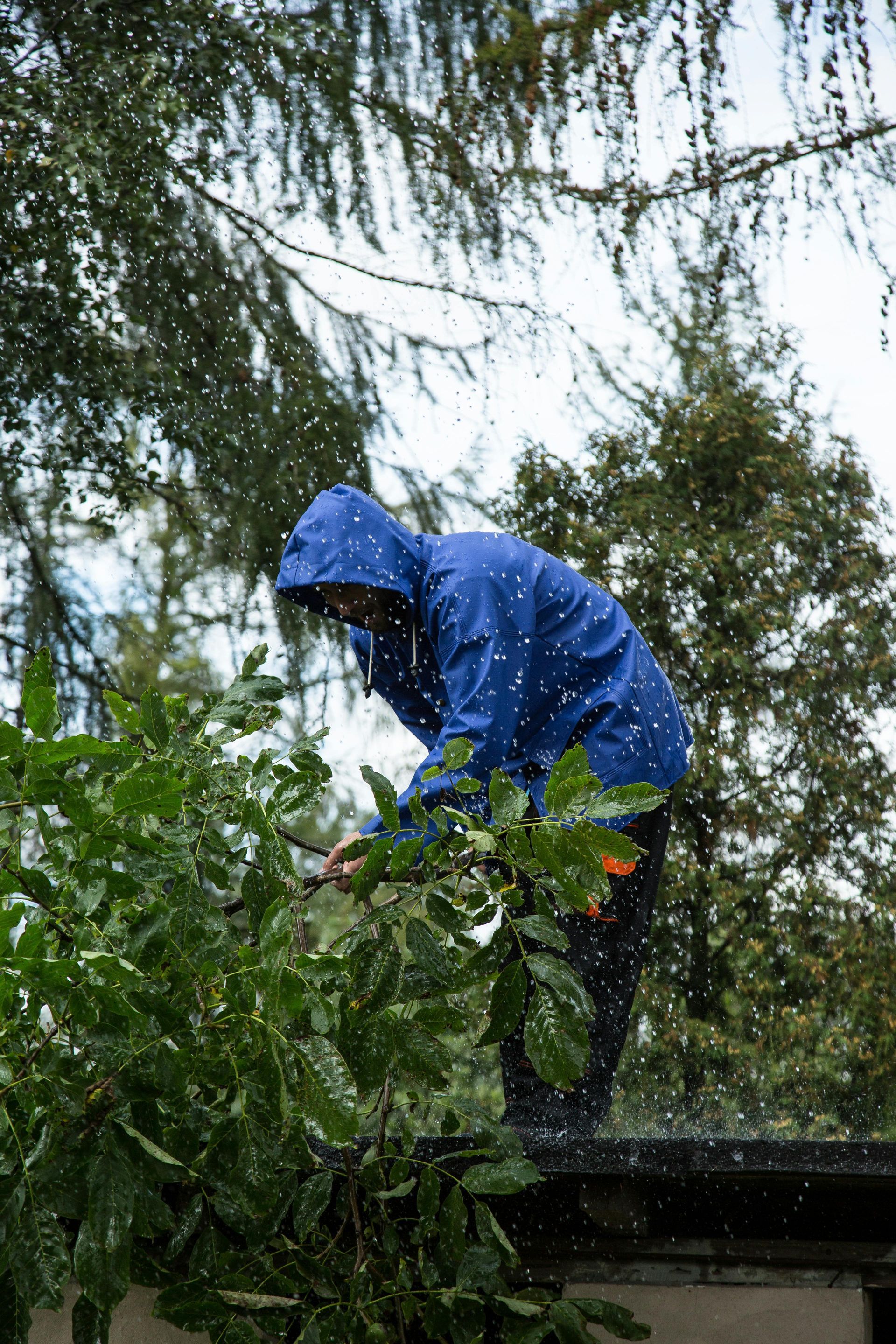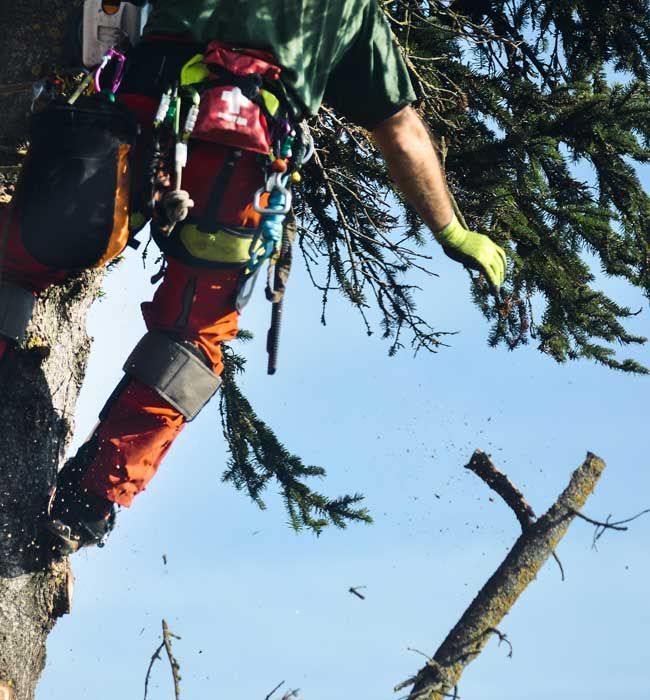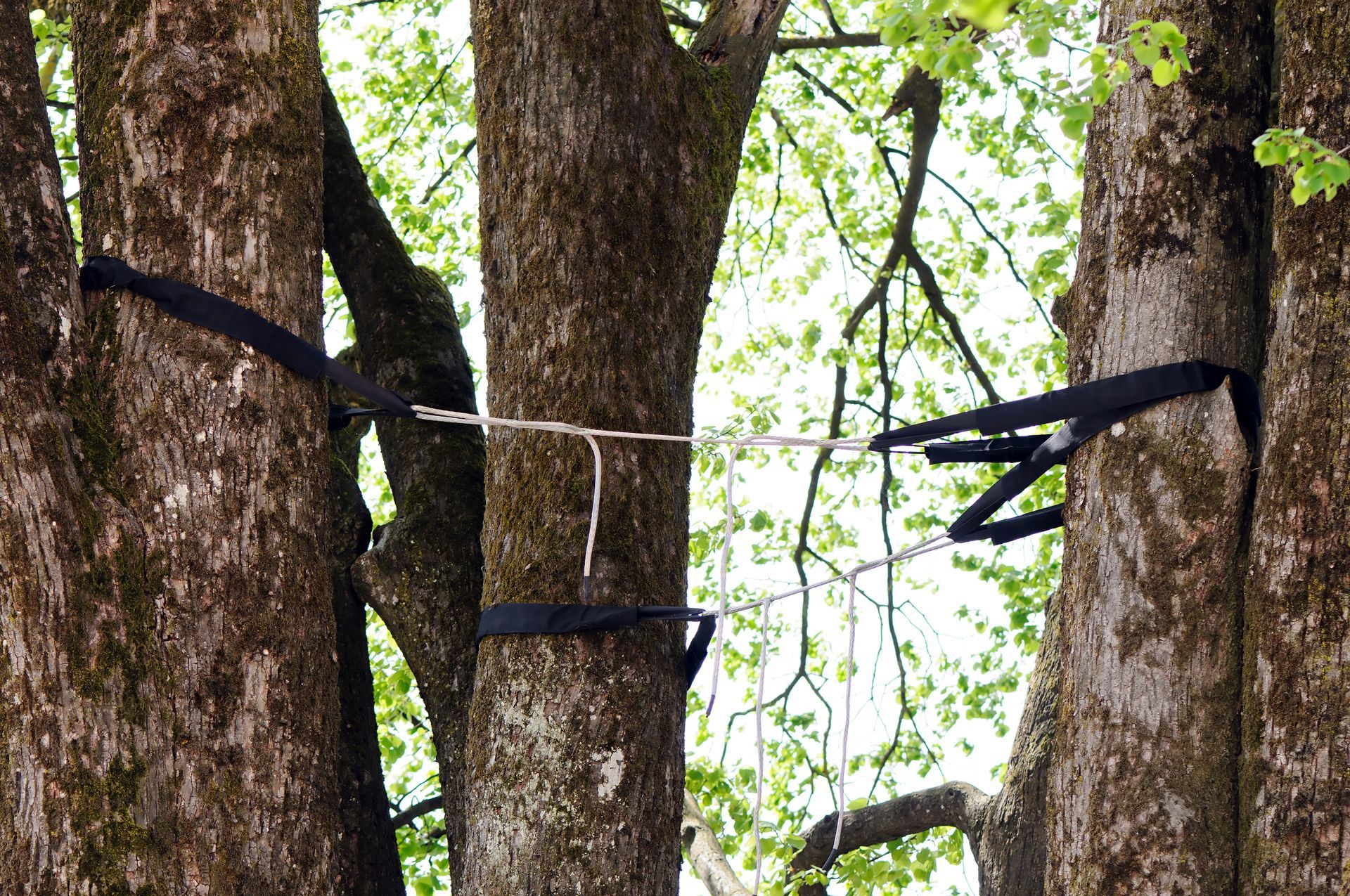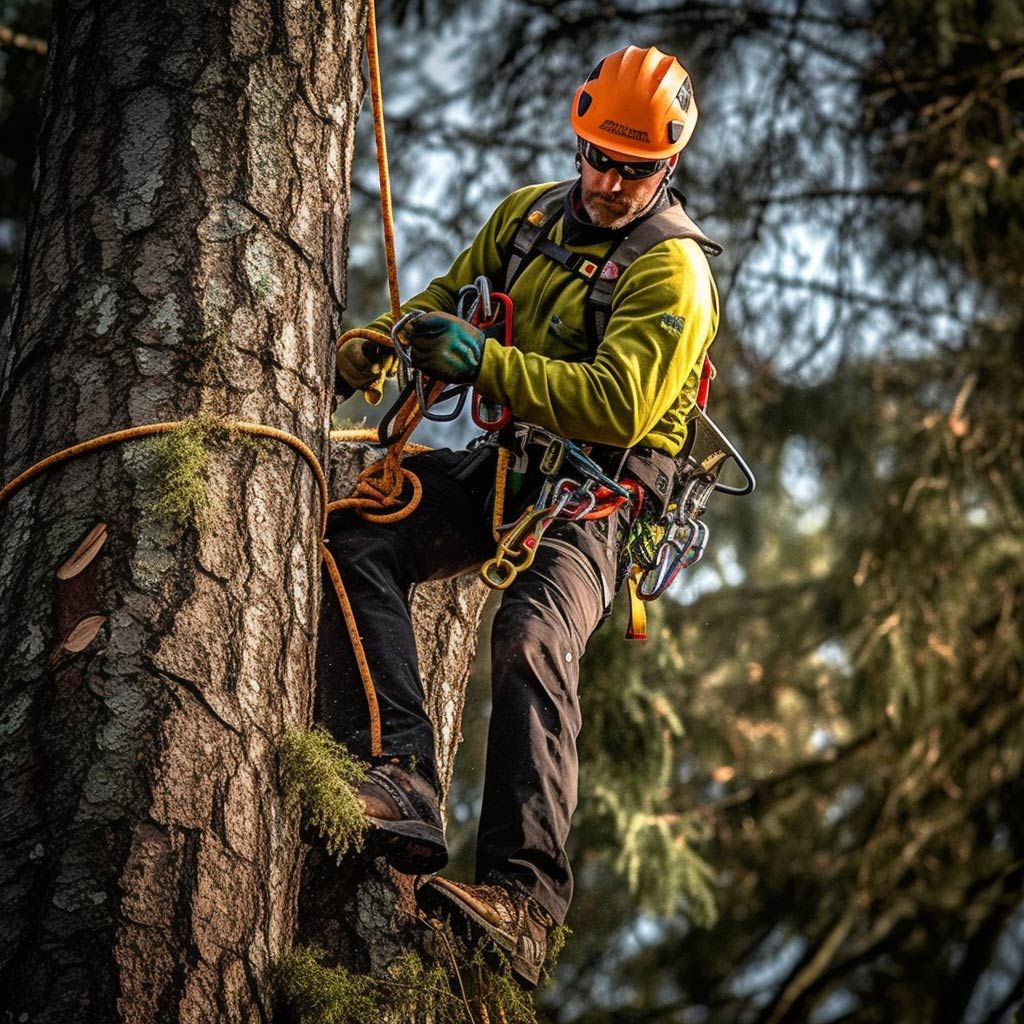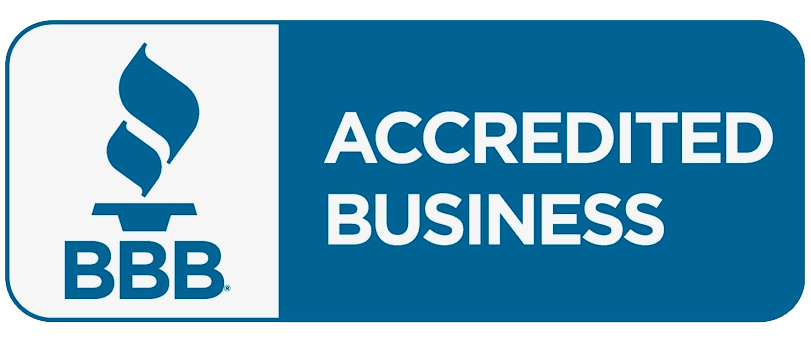
Ensure Your Tree Service is Licensed and Insured
Hiring a tree service? Make sure they're licensed and insured. This protects you from liability and ensures quality work. Here's a step-by-step guide to verify their credentials.
Why Should You Verify a Tree Service’s License and Insurance?
Checking if a tree service is licensed and insured is important. It means they meet local rules and standards. A licensed service will likely follow safety rules and have trained workers.
Insurance is your protection. If a worker gets hurt on your property and the company isn’t insured, you might have to pay for medical bills and damages. Proper insurance, like liability and worker’s compensation, protects you from this risk.
By verifying these details, you make sure the tree service is professional and trustworthy. It’s a simple step to avoid legal and financial headaches.
What Licenses Should a Tree Service Have?
Tree services need specific licenses to operate legally. Here are some common licenses to look for:
- Business License: This is basic proof that the company is registered to operate in your area.
- Arborist Certification: Certification from recognized bodies like the International Society of Arboriculture (ISA) shows that the service employs trained professionals.
- Local or State Licenses: Depending on your location, tree services might need additional licenses or permits.
Verify these licenses through local government websites or by contacting the issuing organizations. It ensures the tree service meets all legal requirements and standards.
How Can You Check if a Tree Service is Licensed?
Verifying a tree service’s license is essential. Here’s a detailed guide to help you through the process:
- Ask for License Numbers: Start by asking the tree service for their business license number and any other relevant certifications, like an arborist certification.
- Use Online Databases: Many local and state governments offer online databases. Enter the license number into these databases to check its status. Look for:
- Active status: The license should be current and not expired.
- Any complaints or violations: This information can give you an idea of the company’s track record.
- Contact Local Authorities: If online resources aren’t available or you want to double-check, call your local government office. Provide them with the license number and ask them to verify its validity.
- Check Professional Associations: If the tree service claims to be certified by organizations like the International Society of Arboriculture (ISA), visit the ISA website. They have a directory where you can search for certified arborists.
Taking these steps ensures that the tree service is properly licensed and follows local regulations. It gives you peace of mind that you’re hiring a legitimate and qualified company.
What Types of Insurance Should a Tree Service Carry?
Making sure a tree service has the right insurance is key to protecting yourself. Here are the main types of insurance they should have:
- Liability Insurance: This covers any damage the tree service might cause to your property. For example, if a branch falls and breaks a window, liability insurance will cover the repair costs.
- Worker’s Compensation Insurance: This protects you if a worker gets injured while working on your property. Without it, you might be held responsible for medical bills and lost wages.
- Property Damage Insurance: This is specific coverage for any damage that might occur to your property during the tree service work.
- Commercial Auto Insurance: If the tree service uses vehicles to transport equipment, this insurance covers any accidents or damages involving their vehicles.
Ask the tree service for proof of these insurance policies. They should provide a Certificate of Insurance (COI), which includes:
- Policy number
- Coverage details
- Insurance provider’s contact information
- Expiration dates
Verify the COI by calling the insurance company directly. Confirm the coverage is current and valid.
Having these insurances in place protects you from financial and legal risks, ensuring that the tree service operates responsibly and professionally.
How Can You Verify a Tree Service’s Insurance?
Verifying a tree service’s insurance is essential to ensure you’re protected. Here’s how to do it:
1.
Ask for a Certificate of Insurance (COI): Request the COI from the tree service. This document should list all the insurance policies the company holds, including liability, worker’s compensation, and property damage insurance.
2. Review the COI Details: Check the COI for:
- Policy numbers
- Coverage types
- Coverage limits
- Effective and expiration dates
- Insurance company’s contact information
3. Contact the Insurance Provider: Call the insurance company directly using the contact information on the COI. Ask them to verify:
- The policy’s active status
- Coverage amounts
- Specific coverages listed
4.
Confirm Coverage is Sufficient: Make sure the coverage limits are adequate for the scope of work. For instance, a general liability policy should cover at least $1 million in damages.
5.
Check for Additional Insured Clause: Some tree services may add you as an “additional insured” on their policy. This provides you with additional protection and can be useful if any issues arise.
6.
Re-verify for Long Projects: If the tree service project spans several months, periodically re-check the insurance status to ensure it remains active throughout the project duration.
By following these steps, you can confirm that the tree service has adequate and valid insurance, protecting you from potential liabilities.
What Questions Should You Ask a Tree Service About Their License and Insurance?
When hiring a tree service, asking the right questions can ensure you're making a safe and informed choice. Here are some key questions to ask:
- Can you provide your license number and proof of insurance?
This is the most basic requirement. A professional tree service should readily provide this information. - Is your insurance coverage up to date?
Confirm that their insurance policies are current and haven’t expired. - What type of insurance do you have?
Ensure they have general liability, worker’s compensation, and property damage insurance. - Can I contact your insurance provider to verify your coverage?
A reputable company won’t mind you verifying their insurance details with their provider. - Have you had any insurance claims or violations in the past?
This question helps you understand their track record and reliability. - Are your workers covered under your insurance?
This ensures that any injuries to workers on your property are covered by the company’s insurance, not your homeowner’s insurance. - Do you have any certifications or memberships in professional organizations?
Membership in organizations like the International Society of Arboriculture (ISA) indicates a commitment to professional standards. - Can you provide references from previous clients?
Talking to past clients can give you a sense of their reliability and quality of work.
By asking these questions, you can gauge the tree service’s professionalism and ensure they are properly licensed and insured, giving you peace of mind.
What Are the Red Flags to Watch for When Hiring a Tree Service?
When hiring a tree service, be on the lookout for warning signs that may indicate an unreliable or untrustworthy company. Here are some red flags to watch for:
- No Proof of License or Insurance: If the company hesitates or refuses to provide their license or insurance information, it's a major red flag.
- Unusually Low Quotes: Extremely low estimates can be tempting but may indicate a lack of proper insurance or licensing, or inferior service quality.
- No Written Contract: A reputable tree service will provide a detailed written contract outlining the scope of work, costs, and timelines. If they refuse, proceed with caution.
- No Physical Address: Companies that only provide a P.O. box or no address at all can be difficult to track down if problems arise. Ensure they have a physical office location.
- Negative Reviews or Complaints: Check online reviews and ratings. Consistently negative feedback or unresolved complaints with the Better Business Bureau (BBB) are red flags.
- High-Pressure Sales Tactics: Beware of companies that use high-pressure sales tactics or insist on immediate decisions. A reputable service will give you time to consider your options.
- Lack of Equipment or Safety Gear: Professional tree services should have proper equipment and safety gear. If they show up without these, it could indicate a lack of professionalism and safety standards.
- No Certifications: While not always necessary, certifications from professional organizations like the International Society of Arboriculture (ISA) can indicate a higher level of expertise and commitment to industry standards.
By being aware of these red flags, you can avoid hiring unqualified or unscrupulous tree services, ensuring you receive safe and professional work.
Conclusion
Ensuring that a tree service is licensed and insured is vital for your peace of mind and protection. It helps you avoid legal and financial risks while ensuring that the work is performed by qualified professionals. Here's a quick recap of the steps you should take:
- Verify Licenses: Ask for the tree service’s license number and check it with local authorities or online databases.
- Check Insurance: Request a Certificate of Insurance (COI) and confirm the coverage with the insurance provider.
- Ask the Right Questions: Inquire about their insurance types, coverage status, and any past claims or violations.
- Watch for Red Flags: Be wary of companies that cannot provide proof of insurance or license, offer unusually low quotes, or use high-pressure sales tactics.
Taking these steps ensures that you hire a reputable and trustworthy tree service, protecting both your property and your peace of mind.
Call to Action
Ready to ensure your trees are in expert hands? Trust Clark's Tree Express, your local tree care specialists with over four decades of experience. Serving the beautiful communities of:
- Lake Norman (Denver, Sherrills Ford, Troutman, Mooresville, Davidson, Cornelius, Huntersville)
- Gaston County (Belmont, Gastonia, Kings Mountain)
- Charlotte
- Lake Wylie (Tega Cay, Fort Mill, Rock Hill, York, Clover)
- Lincoln County (Lincolnton, Iron Station, Maiden, Stanley)
Our services include:
- Tree Removal
- Tree Trimming/Pruning
- Emergency Storm Damage Tree Removal
- Stump Grinding
- Tree Planting
- Cabling
- Lot Clearing (specializing where trees need to be strategically removed)
Welcome to Clark's Tree Express, your premier tree service company in Huntersville, NC. Since 1975, we've been dedicated to keeping your trees healthy and beautiful. Whether you need tree removal, pruning, stump grinding, or planting, our experts provide tailored care for your unique trees.
Facing storm damage? We specialize in storm damage tree removal, ensuring your property is safe after severe weather. Equipped with the right tools and expertise, we’re here to help.
Don't wait! Call Clark's Tree Express today and experience top-notch tree care from trusted professionals. Your trees deserve the best, and so do you!
Contact us now to get a free quote!
Contact Us
We will get back to you as soon as possible.
Please try again later.
CONTACT INFORMATION
Address:
6631 Olmsford Dr, Huntersville, NC 28078, United States of America
Business Hours:
- Mon - Sun
- Open 24 Hours
